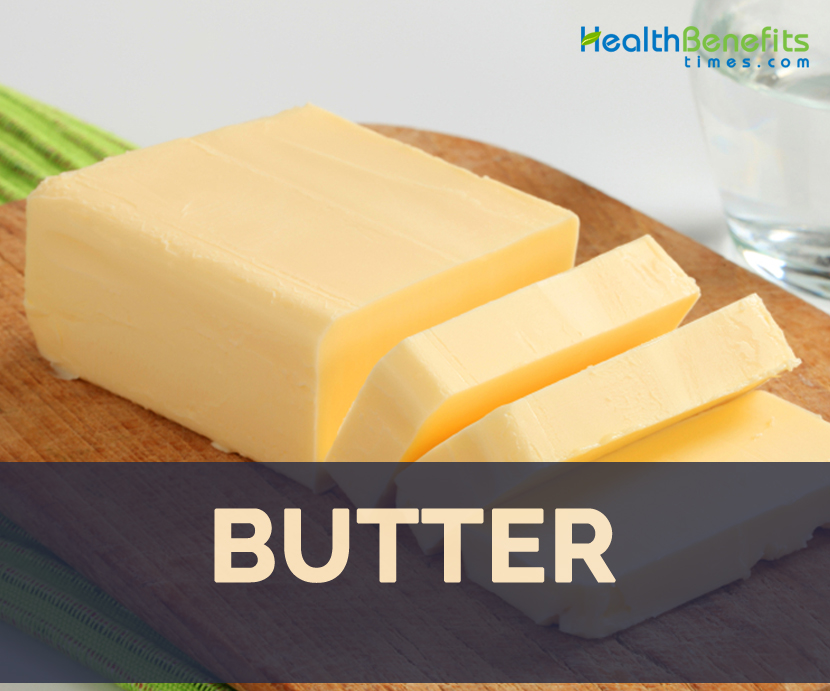| Butter Quick Facts |
| Name: |
Butter |
| Colors |
Yellowish or white |
| Shapes |
Small, rectangular blocks |
| Taste |
Buttery |
| Calories |
1628 Kcal./cup |
| Major nutrients |
Total Fat (526.06%)
Vitamin A (221.86%)
Vitamin E (35.13%)
Vitamin B-12 (16.25%)
Vitamin K (13.25%) |
| Health benefits |
Powerful antioxidant, Promotes Weight Loss, Anti-Cancer properties, Intestinal conditions, Cardiovascular Health, Growth & Development, Thyroid health, Promotes healthy brains and nervous system, Sexual dysfunction, Eye health, Arthritis and joints, Bone health |
| More facts about Butter |
Butter us actually a solid dairy product which is made by whipping fresh or fermented cream or milk, to separate the butterfat from the buttermilk. It has special reference in the Ayurvedic medicines and known as “Navaneeta” in Sanskrit. Ayurveda uses butter both to maintain health and to treat diseases. Cows and buffalo are actually the most popular source of milk, but butter can be made from milk of other mammals like sheep, goats, camel etc. Salt such as dairy salt, flavorings and preservatives are occasionally added to butter. It is an excellent source of energy and calories, butter consists of saturated fats, mono-saturated fats, and polyunsaturated fats, plenty of Vitamin A, Vitamin D and Cholesterol. This healthy fat comes along with numerous health benefits, particularly butter made from many medicinal properties
But occasionally it is puzzling that is it healthy or not due to its rich fat content. But it’s only a legend that it is harmful to health. In fact, it is an excellent source of dietary fat, vitamin, and minerals that are vital for normal functioning and development of the body. Also, it promotes weight loss. It is generally used as a spread on plain or toasted bread products and a condiment on cooked vegetables, as well as in cooking, such as baking, sauce making, and pan frying. Butter consists of butterfat, milk proteins and water. Butter is one of those foods that can turn bland meals into masterpieces.
History
Butter is one of the world’s supreme foods. Throughout most of human civilization, butter has been seen as a symbol of good living. It is an adored food and a staple in many cultures across the globe.
The earliest evidence of milk use dates back to around 6,500 BCE. A team led by Richard Evershed, a bio-geochemist at the University of Bristol, discovered residues of milk fats on pottery found in Northwest Turkey. It is believed that raw milk wasn’t actually consumed by people at this time due to uniform lactose intolerance in adults. The high amounts of milk fats found in the pottery suggest that people ate butter, cheese and yogurt, rather than consuming raw milk.
Many believe that ancient traveling people first discovered the miracle of butter. It is considered that while traveling long distances, nomads attach sacks containing milk to their pack animals and the cream was finally mixed into butter.
A Sumerian tablet from ancient Mesopotamia that dates back to 2,500 BCE explains basic dairy production. The tablet shows the milking of cows, and thus, the making of butter. The discovery of butter-making had a major impact on the development of human culture. Dairy production provided a year-round source of nourishment for people. Without it, our world would be a very different place.
Butter rose to prominence in the middle Ages, when it became a commonly-used product throughout northern Europe. Though the upper classes considered it peasant food, they also ate it occasionally. Back then, the consumption of butter was prohibited during Lent. Many people in northern Europe chose to pay the fee imposed by the Catholic Church that allowed them to eat butter. This is why the tower on the Rouen Cathedral in France is nicknamed the Butter Tower.
For centuries, butter has played an important role in our world.
Nutritional value
Apart from their buttery taste, butter is a good source of nutrients, vitamins and minerals. Consuming 227 gram of butter offers 184.12 g of Total Fat, 1553 µg of Vitamin A, 5.27 mg of Vitamin E, 0.39 µg of Vitamin B-12, 15.9 µg of Vitamin K, 54 mg of Phosphorus, 0.077 mg of Vitamin B2 and 54 mg of Calcium. Moreover many Amino acids 0.027 g of Tryptophan, 0.086 g of Threonine, 0.116 g of Isoleucine, 0.188 g of Leucine, 0.152 g of Lysine, 0.048 g of Methionine, 0.018 g of Cystine and 0.093 g of Phenylalanine are also found in 227 gram of Butter.
Health benefits of Butter
A few years ago, butter was considered to be unhealthy, mostly due to the high saturated fat content. However, the public and scientific opinion is gradually shifting in favor of butter consumption.
1. Powerful antioxidant
Natural butter consists of high levels of carotene, an unusual and essential nutrient for human beings. Carotene contributes to human health in two ways, either turning into antioxidants, or converting into vitamin A. In terms of antioxidants, about 60% of carotene taken in by the body is changed into these disease-fighting compounds in the body. These antioxidants are anti-infectious and can provide a boost to your immune system. Since vitamin A is fat-soluble, it can benefit those parts of the body that have fat-soluble membranes, like the skin, eyes, mouth, throat, as well as the urinary and digestive tracts. There, it can promote cell regrowth and repair, protecting it from vulnerability to infectious substances.
Furthermore, vitamin A helps to boost the immune system by encouraging the production of lymphocytes, the immune system’s defensive cells that defend against viruses and various diseases. High levels of vitamin A can improve your defenses against respiratory infections, as well as autoimmune diseases like AIDS.(1), (2)
2. Promotes Weight Loss
Weight loss is one of the popular topics during eating butter. But it’s not a problem with butter.
You can enjoy butter due to its rich source of dietary fats. It has been found that consuming butter does not support obesity. But its use should be limited.
3. Anti-Cancer properties
High levels of vitamin A and beta-carotene have also been widely studied, and positive connections between these two nutrients and lower chances of colorectal and prostate cancer have been found. More research is still being done on vitamin A’s impact on breast cancer, but researches so far have been hopeful. Some of this benefit comes from the antioxidant capabilities of vitamin A, because they dynamically defend against cancerous growth and promote apoptosis (spontaneous cell death) within tumors, slowing down the metastasis of cancerous cells.
Conjugated Linoleic Acid (CLA) has also been found in significant levels in butter, and has been connected in studies as a cancer prevention method. Overall, butter, when consumed in moderate quantities help to reduce your chances of developing cancer! However, vitamin A in high amounts when combined with smoking has been shown to increase the chances of lung cancer, so smokers should turn towards vitamin C for their antioxidant needs, rather than vitamin A.(3), (4)
4. Intestinal conditions
Butter consists of considerable amount of glycospingolipids. This special type of fatty acid helps to protect your body from number of gastrointestinal issues and conditions, by contributing to the mucus layers along the membrane and making it more difficult for bacterial infections to fix to functioning receptors. Butter has a high level of glycosphinglolipids within it, mainly because it is derived from another animal, thus adding butter to your diet can increase your defenses in your stomach and digestive tracts.(5)
5. Cardiovascular Health
Cardiovascular disease is one of the leading causes of death in modern society. Relationship between saturated fats and cardiovascular disease has been a debatable topic for several decades.
It is a known fact that a high intake of saturated fat can increase levels of cholesterol in the blood, which is actually a risk factor for cardiovascular disease.
Many researches have failed to find a link between saturated fat intake and cardiovascular disease. The same applies to high-fat dairy products, such as butter. Researches have shown that high-fat dairy products do not increase the risk of cardiovascular disease. In fact, many studies have actually found the intake of high-fat dairy products to be beneficial for cardiovascular health.(6), (7), (8), (9), (10), (11), (12), (13), (14), (15), (16), (17)
6. Growth & Development
Many elements in butter ensure optimal growth of children. Among them vitamin A is a chief one. Individuals who have been deprived of sufficient vitamin A during gestation tend to have narrow faces and skeletal structure, small palates as well as crowded teeth. Apart from that extreme vitamin A deficiency results in blindness, skeletal problems and other birth defects. Individuals getting optimal vitamin A from the time of conception have broad handsome faces, robust straight teeth, and outstanding bone structure. Similarly Vitamin A plays an important role in the development of the sex characteristics.
7. Thyroid health
Our thyroid gland is arguably the most important part of our endocrine system, and one of the essential relationships that it has is with vitamin A. Most people that have hypothyroidism or other thyroid related illnesses are also deficient in vitamin-A. This helps the proper functioning and regulating of hormones to be created and secreted throughout the body. Butter has more vitamin-A than any other type of vitamin, so if you have thyroid issues, or want to prevent them from occurring, be sure to include butter in moderate amounts in your diet.(18)
8. Promotes healthy brains and nervous system
As mentioned previously butter is high in cholesterol. This is a good thing! That’s because our brains and nervous systems require cholesterol to develop properly. While the brain can make its own cholesterol, it also pulls cholesterol from the blood plasma (which comes from your diet) when it needs more.
It’s also essential for growing children.(19)
9. Sexual dysfunction
Most of the fat soluble vitamins that are found in butter are vital to human health, because they are essential to take nutrients out of water-soluble vitamins. Research has shown that many of these fat-soluble vitamins can even improve sexual performance. Both vitamin A and D are essential for proper brain and nervous system developments, but they are also needed for sexual development. Without those fats, as well as vitamin E, all men and women can experience a type of nutritional sterility, where their sexual characteristics don’t appear properly. It is no surprise that rates of sexual dysfunction and sterility have increased dramatically in the recent decades since butter consumption has declined. Butterfat is the best source of fat-soluble vitamins we have, yet many people are completely losing that part of their nutritive intake.(20)
10. Eye health
Butter consists of good amount of beta carotene, which has long been known as a booster for eye health. It contributes to the protection of the eyes, as well as in encouraging additional cellular growth, retarding the onset of cataracts, and decreasing the chances of macular degeneration. Apart from that it also decreases the risk of angina pectoris and other eye-related conditions.(21)
11. Arthritis and joints
Butter contains a rare hormone-like substance that can only be found in butter and cream. It is known as the Wulzen Factor, and it help to protect people from calcification of the joints, which leads to arthritis. This same factor can also protect humans from hardening of the arteries, calcification of the pineal gland, and as mentioned above, cataracts. It is only found in animal fats like cream or milk, but pasteurization removes the Wulzen Factor, so butter substitutes and margarine lose that vital benefit. Research have shown that baby calves that are given substitute formula without the Wulzen factor do not survive, until it is replaced with organic butterfat.(22)
12. Bone health
Apart from the anti-stiffness factor explained above, butter is also rich in essential minerals, like manganese, zinc, copper, and selenium. These are all important elements in maintaining bone health, and encouraging bone repair and regrowth. Without a steady intake of these minerals, both essential and trace, you will develop osteoporosis, arthritis, and will suffer from other symptoms of premature aging.(23)
https://www.youtube.com/watch?v=pg-CHPqhO2M
Types of butter
If you have ever taken a look at the dairy section of your grocery store, you probably noticed the huge varieties or types of butter available. It can be hard to distinguish between butter products like unsalted butter, salted butter, European butter, and so on. Then there are the butter-like products and other so-called “butter spreads”, which we won’t even get into. It can be a confusing process trying to select a suitable butter for your needs. Let’s take a closer look at the different types of butter
1. Unsalted Butter or Sweet Butter
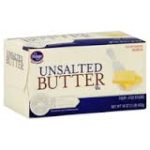 In simple terms, this is actually a traditional butter without the salt. It is ideal for baking or cooking because the lack of salt means that the cook can add his/her own salt as required by the recipe. They don’t need to worry about the extra salt in the butter that can distract the flavoring.
In simple terms, this is actually a traditional butter without the salt. It is ideal for baking or cooking because the lack of salt means that the cook can add his/her own salt as required by the recipe. They don’t need to worry about the extra salt in the butter that can distract the flavoring.
2. Salted Butter
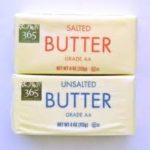 Salted butter is commonly used to spread on toast or to season vegetables. The salt in this butter adds flavor, which makes it ideal for direct eating when on top a food. Salted butter can be a problem when baking because you have to account for the salt in the butter in addition to the salt required for the recipe. This is why many recipes call for unsalted butter. Salted butter will last longer than unsalted butter because the salt preserves it.
Salted butter is commonly used to spread on toast or to season vegetables. The salt in this butter adds flavor, which makes it ideal for direct eating when on top a food. Salted butter can be a problem when baking because you have to account for the salt in the butter in addition to the salt required for the recipe. This is why many recipes call for unsalted butter. Salted butter will last longer than unsalted butter because the salt preserves it.
3. European-Style Butter
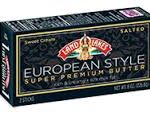 European style butter contains more butterfat than the above two varieties. It has nearly 85 percent butterfat vs. approximately 80 percent for regular (American) butter. European-style butter is slow churned and cultured which creates a creamier texture with less moisture. This makes it wonderful for baking buttery desserts or using in sauces. It is also typically more expensive than regular butter.
European style butter contains more butterfat than the above two varieties. It has nearly 85 percent butterfat vs. approximately 80 percent for regular (American) butter. European-style butter is slow churned and cultured which creates a creamier texture with less moisture. This makes it wonderful for baking buttery desserts or using in sauces. It is also typically more expensive than regular butter.
4. Whipped Butter
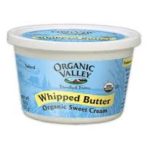 Whipped butter is easier to spread than regular butter. It is particularly spreadable if it has warmed a bit at room temperature. It is not meant to be used in baking or recipes because it contains more air than regular butter. The extra air makes it hard to figure out the volume difference between regular butter and whipped butter. This type of butter comes in salted and unsalted varieties. It is best used as a spread.
Whipped butter is easier to spread than regular butter. It is particularly spreadable if it has warmed a bit at room temperature. It is not meant to be used in baking or recipes because it contains more air than regular butter. The extra air makes it hard to figure out the volume difference between regular butter and whipped butter. This type of butter comes in salted and unsalted varieties. It is best used as a spread.
5. Organic Butter
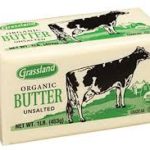 Organic butter is available in unsalted and salted form. Organic means that it was produced from organic milk. Cows are supposedly pesticide free, antibiotic free, and growth hormone free. The cows are allowed to graze in the pasture for several months during the year, unlike most non-organic producing cows. This creates a healthier cow and a healthier butter product.
Organic butter is available in unsalted and salted form. Organic means that it was produced from organic milk. Cows are supposedly pesticide free, antibiotic free, and growth hormone free. The cows are allowed to graze in the pasture for several months during the year, unlike most non-organic producing cows. This creates a healthier cow and a healthier butter product.
6. Light Butter
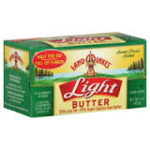 Light butter is touted as being almost 50 percent less in calories than traditional butter. You can also see it being labeled as ‘Reduced-Fat Butter’. This type of butter is meant to be used as a spread and almost always should not be used in baking because of its higher air and moisture content.
Light butter is touted as being almost 50 percent less in calories than traditional butter. You can also see it being labeled as ‘Reduced-Fat Butter’. This type of butter is meant to be used as a spread and almost always should not be used in baking because of its higher air and moisture content.
7. Butter Blends
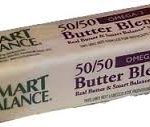 This type of butter is actually a combination of butter and oil (canola, olive oil, vegetable oil, etc.). It creates a spreadable butter that does not need to sit out at room temperature to become spreadable. You need to substitute this butter for regular butter in baking. You will likely end up with texture and taste issue as a result.
This type of butter is actually a combination of butter and oil (canola, olive oil, vegetable oil, etc.). It creates a spreadable butter that does not need to sit out at room temperature to become spreadable. You need to substitute this butter for regular butter in baking. You will likely end up with texture and taste issue as a result.
8. Churned Butter
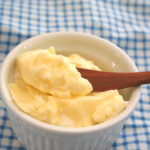 Traditional salted butter made by churning pasteurized cream is called churned butter. Churned butter is also available in unsalted version.
Traditional salted butter made by churning pasteurized cream is called churned butter. Churned butter is also available in unsalted version.
9. Ghee (Clarified Butter)
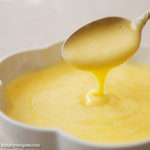 Ghee is a kind of clarified butter. Basically, it is regular butter that has been heated to separate out the milk solids and to remove the moisture. What is left is a paste-like butter (at room temperature) which has a high tolerance for heat. You can use it for frying or sautéing. While ghee is common in Southern Asia, it is gaining approval in the United States and can be found commercially throughout America.
Ghee is a kind of clarified butter. Basically, it is regular butter that has been heated to separate out the milk solids and to remove the moisture. What is left is a paste-like butter (at room temperature) which has a high tolerance for heat. You can use it for frying or sautéing. While ghee is common in Southern Asia, it is gaining approval in the United States and can be found commercially throughout America.
10. Blended Butter
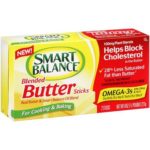 As the name recommends, blended butter is a blend of regular butter and some oil (usually canola). Blended butter is an interesting butter type that is easy to spread straight from the fridge while still maintaining its butter taste.
As the name recommends, blended butter is a blend of regular butter and some oil (usually canola). Blended butter is an interesting butter type that is easy to spread straight from the fridge while still maintaining its butter taste.
11. Flavored Butter
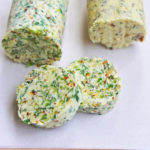
It is butter with additional flavoring like spices, chives, herbs, and garlic. You can use it to top a steak, vegetables, and any other foods that would benefit from extra flavoring.
12. Raw Butter
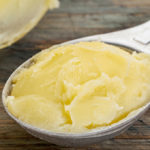 Raw butter is actually an unpasteurized and unprocessed butter that is made from raw cream. It is supposed that raw butter is superior to pasteurized butter because its nutrients are not killed off during the pasteurization process. Of course, there is the debate on whether unpasteurized products are safe. Raw butter tends to be pricey if you can find it.
Raw butter is actually an unpasteurized and unprocessed butter that is made from raw cream. It is supposed that raw butter is superior to pasteurized butter because its nutrients are not killed off during the pasteurization process. Of course, there is the debate on whether unpasteurized products are safe. Raw butter tends to be pricey if you can find it.
13. Whey Butter
Whey that has been separated from the curd is used to make whey butter. Whey butter has a cheesy flavor and is often salty if the curd from which whey was separated was salty.
How to store butter
Keep it well wrapped and refrigerated—and not in the door compartment, where the temperature varies. Butter will pick up odors that collect in your fridge, so if you don’t use up a whole stick of butter in one shot, rewrap it in extra plastic.
Another Medrich tip: Store all those random nubbins and ends in a zippered plastic bag or other closed container.
According to the Butter Institute, unsalted butter has a two-week refrigerator shelf life and salted butter two months. The USDA is a bit more generous, giving a range of one to three months—and in fact, what you buy from the store has perhaps been in cold storage for longer than that.
Still, if you’re not using up your butter quickly—those pie crusts aren’t going to make themselves, you know—it’s better from a freshness standpoint to store it in the freezer, where it’ll keep for up to nine months.
Adverse Effects
In conventional amounts, butter does not have many known adverse health effects.
However, consuming butter in large amounts may very well lead to weight gain and related health problems, particularly in the context of a high calorie diet.
Milk Allergy
Though butter is very low in protein, it still consists of enough of the allergenic whey proteins to cause reactions. Therefore, people with milk allergy should be careful with butter, or avoid it altogether.
Lactose Intolerance
Butter consists of only trace amounts of lactose, so modest consumption should be safe for most lactose intolerant people. Cultured butter (made from fermented milk) as well as clarified butter contains even less lactose and may be more suitable.
References:
http://bodyecology.com/articles/benefits_of_real_butter.php
http://www.naturalnews.com/046770_butter_saturated_fats_health_benefits.html
http://www.westonaprice.org/know-your-fats/why-butter-is-better/
http://www.foodrenegade.com/why-butter-health-food/
http://www.diethealthclub.com/calories/butter.html
http://www.healthyhubb.com/12-health-benefits-real-butter/
https://wikihealthyeating.com/health-benefits-butter/
https://en.wikipedia.org/wiki/Butter
Comments
comments


